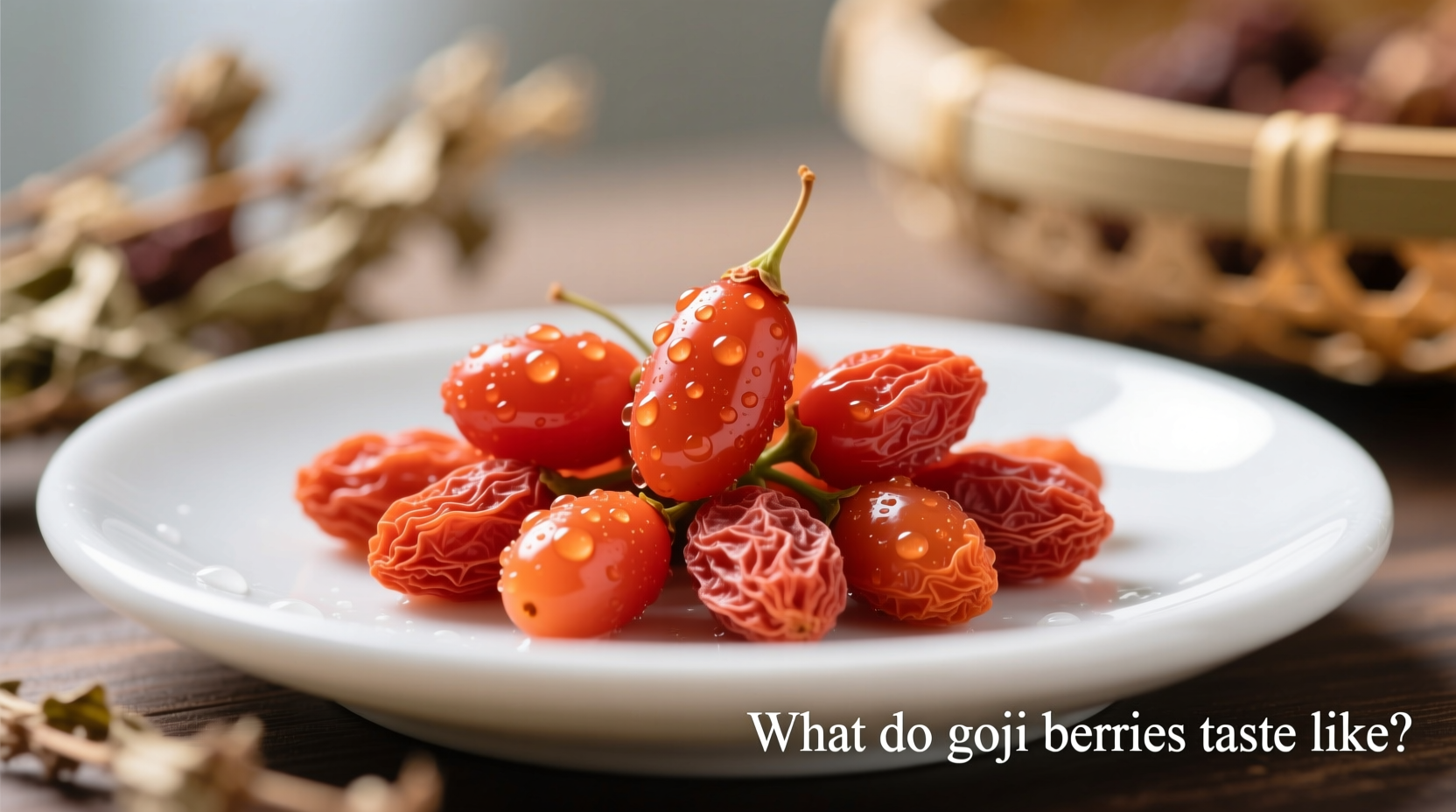Your Complete Guide to Goji Berry Flavor Profile
Understanding exactly what do goji berries taste like helps you incorporate them effectively into your diet. These vibrant red berries, scientifically known as Lycium barbarum, offer a distinctive flavor experience that varies based on preparation method and ripeness.
Breaking Down the Goji Berry Taste Experience
When you bite into a fresh goji berry, you'll notice:
- Sweet-tart balance - Similar to a cross between cranberries and cherries
- Subtle earthiness - A mild background note reminiscent of tomatoes
- Delicate floral hints - Particularly noticeable in fully ripe berries
- Medium acidity - Less sharp than blueberries but more pronounced than raisins
Dried goji berries undergo flavor concentration that enhances certain characteristics. The drying process intensifies the tartness while concentrating natural sugars, creating a flavor profile closer to dried cherries with a slight tang.
| Characteristic | Fresh Goji Berries | Dried Goji Berries |
|---|---|---|
| Sweetness Level | Mild to moderate (8-10° Brix) | Concentrated (18-22° Brix) |
| Tartness | Gentle acidity | Pronounced tang |
| Texture | Juicy, similar to cherry tomato | Chewy, like dried cranberries |
| Aftertaste | Clean, slightly vegetal | Slightly bitter finish |
What Influences Goji Berry Flavor?
Several factors affect how goji berries taste, creating natural variations you should understand:
Ripeness Level
Fully ripe goji berries develop higher sugar content and reduced tartness. According to research from the USDA Agricultural Research Service, goji berries reach optimal flavor when harvested at full red coloration with sugar levels between 8-10° Brix. Underripe berries taste excessively sour, while overripe versions develop fermented notes.
Growing Conditions
Goji berries grown in traditional regions like Ningxia, China (where they've been cultivated for over 1,500 years) develop more complex flavor profiles. The unique mineral composition of the Yellow River basin soil contributes to the characteristic sweet-tart balance that's difficult to replicate elsewhere.
Preparation Method
Your preparation method significantly impacts what dried goji berries taste like compared to fresh:
- Raw consumption - Preserves natural tartness
- Soaking - Softens texture and slightly reduces tartness
- Cooking - Mutes acidity while enhancing sweetness
- Dehydrating - Concentrates both sweet and tart elements

Common Flavor Comparisons
When describing how to describe goji berry taste, culinary experts often reference these familiar comparisons:
"Goji berries taste most similar to a cross between cranberries and cherries," explains Chef Liu Wei, Chinese cuisine specialist. "The fresh berries have that same bright acidity as cranberries but with the underlying sweetness of cherries. When dried, they develop a texture and concentrated flavor closer to dried cherries with a subtle tomato-like earthiness."
Food science research from the Journal of Food Composition and Analysis confirms this assessment, noting that goji berries share key flavor compounds with both tomatoes (lycopene) and berries (anthocyanins), creating their distinctive hybrid profile.
Practical Applications Based on Flavor Profile
Understanding what fruits do goji berries taste similar to helps you use them effectively:
In Sweet Applications
Their natural tartness balances well in:
- Oatmeal and yogurt (use dried berries)
- Energy balls and bars
- Smoothies (fresh or soaked dried berries)
- Baked goods where you want a tart contrast
In Savory Dishes
Leverage their subtle earthiness in:
- Chinese soups and broths (traditional preparation)
- Grain pilafs for sweet-tart contrast
- Salad toppings with bitter greens
- Glazes for poultry or pork
What Goji Berries Don't Taste Like
Despite common misconceptions, goji berries don't taste like:
- Goji berries aren't as sweet as goji juice - Commercial juices often contain added sugars
- They lack the intense tartness of raw cranberries - More balanced sweet-tart profile
- Not similar to goji berry supplements - Capsules and extracts lack fresh flavor complexity
Maximizing Flavor Quality
To experience the best goji berry sweetness level and flavor:
- Store dried berries in airtight containers away from light
- Refrigerate fresh berries and consume within 2-3 days
- Soak dried berries in warm water for 10 minutes before eating raw
- Avoid products with added sugar or sulfites that mask natural flavor
Final Taste Assessment
When evaluating are goji berries sour or sweet, the answer is both - they offer a sophisticated balance that makes them versatile in culinary applications. The flavor complexity explains why they've been valued in traditional Chinese cuisine for centuries, not just for health benefits but for their distinctive taste contribution.











 浙公网安备
33010002000092号
浙公网安备
33010002000092号 浙B2-20120091-4
浙B2-20120091-4